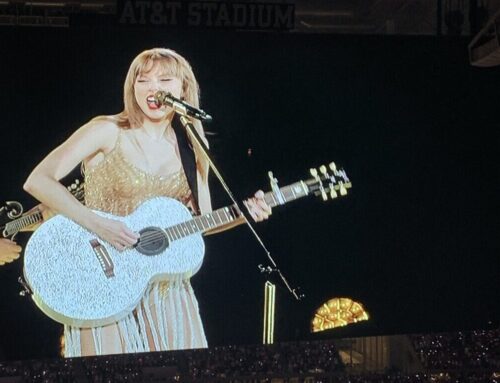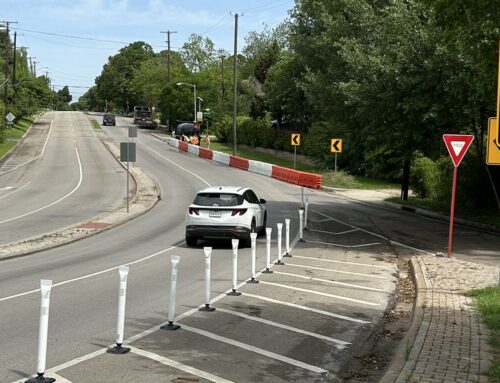This story in March’s Advocate CliffDweller explains the concept of "contributing structures" as it relates to the Bishop/Davis land use study. The idea behind this, according to committee members, was to encourage reuse of historical "buildings of character" along Bishop and Davis.
To give you an idea of what these buildings might include, take a look at this slideshow with 11 of the structures identified. After the jump, the committee’s definition of a contributing structure, and the full list or more than 100.
What does “contributing” mean?
Planners use the term “contributing” to refer to buildings that date back to the original architectural period of an older neighborhood (the “period of significance”) and that haven’t been remodeled so badly that the original architecture is lost. In very loose terms, it means the historical buildings in a historical area.
What is the “period of significance” of the Bishop/Davis area?
“Period of significance” refers to the decades when an older neighborhood’s history was being made. Downtown Waxahachie and Deep Ellum and Williamsburg, Virginia, are all historical areas, but they blossomed during different eras. Since Davis Street and Bishop Avenue were developed around the old streetcar lines, their period of significance is 1903 to 1956 – from the arrival of the trolley to the closure of the tracks.
How does the label “contributing” affect what can be done with a property?
In Dallas’ Historical Overlay Districts (like Winnetka Heights), it’s a lot harder to tear down or badly remodel a property if it’s contributing. In Dallas’ Conservation Districts (like Bishop Arts and Kings Hwy.), contributing buildings are protected, but not as much. In National Register Historic Districts (like Miller-Stemmons), the term contributing is almost purely an honor, with no regulatory effect.
So what does “contributing” mean with regard to the proposed Davis/Bishop rezoning?
The biggest enemy to preserving historic buildings along Davis and Bishop are the city’s parking requirements. The buildings mostly predate widespread use of automobiles — they were constructed specifically to take advantage of the streetcars – yet the laws now governing parking date back to America’s post-WWII love affair with cars. The Bishop/Davis Land Use Study recommends that our historic buildings – the district’s “contributing structures” — be given favorable treatment when calculating required parking. Just how deep those parking concessions would be still has to be hashed out.
So the study proposes saving cool old buildings by giving them a break on parking?
Exactly (though this probably wouldn’t apply to restaurants, which need a lot more parking than offices, apartments or small shops).
Why not just pass laws forbidding that our historic buildings be torn down?
First, the owners of contributing buildings would fight new rules that take away their property rights. Second, parking concessions help make historic preservation financially feasible. The Study recommends the carrot over the stick.
If I own a property about to be declared contributing, should I be worried?
You should be thrilled! If your building is listed as contributing in the New Planned Development District, you’ll have more options for upgrading it, yet you’ll retain all the right you had before to alter or demolish the building.
Will contributing buildings have higher property taxes than non-contributing ones?
No. The Dallas Central Appraisal District doesn’t distinguish between contributing and non-contributing buildings. In fact, the tax appraisal system is tougher on newly constructed buildings than renovated ones. That said, studies have shown that neighborhoods that somehow preserve their historic character hold market value better than unprotected ones.
Contributing Structures
W. DAVIS CORRIDOR
Davis Frontage Side Streets
No. Street No. Street
110 W. Davis 833 W. 7th
238 W. Davis 837 W. 7th
247 W. Davis 600 N. Bishop
300 W. Davis 502 N. Clinton
306 W. Davis 607 N. Clinton
316 W. Davis 600 Haines
332 W. Davis 1001 Kings Hwy
408 W. Davis 418 N. Marlborough
416 W. Davis 508 N. Montclair
420 W. Davis 509 N. Montclair
428 W. Davis 600 N. Montclair
445 W. Davis 601 N. Montclair
451 W. Davis 601 N. Rosemont
511 W. Davis 602 N. Rosemont
512 W. Davis 600 N. Tyler
518 W. Davis 610 N. Tyler
522 W. Davis 503 N. Windomere
614 W. Davis 500-506 N. Winnetka
633 W. Davis 508 N. Winnetka
634 W. Davis 509 N. Winnetka
654 W. Davis
700 W. Davis
714 W. Davis
817-819 W. Davis
821 W. Davis
838 W. Davis
936 W. Davis
937 W. Davis
1003 W. Davis
1123 W. Davis
1214 W. Davis
1215 W. Davis
1305 W. Davis
1310 W. Davis
1313 W. Davis
1314 W. Davis
1400 W. Davis
1405 W. Davis
1408 W. Davis
1809 W. Davis
2212 W. Davis
N. BISHOP CORRIDOR
No. Street
614 N. Bishop
627 N. Bishop
702 N. Bishop
705 N. Bishop
706 N. Bishop
710 N. Bishop
712 N. Bishop
712-714 N. Bishop
713 N. Bishop
729 N. Bishop
736 N. Bishop
808-810 N. Bishop
811 N. Bishop
819 N. Bishop
825 N. Bishop
826 N. Bishop
830 N. Bishop
835 N. Bishop
900 N. Bishop
901-907 N. Bishop
913-915 N. Bishop
914 N. Bishop
917-919 N. Bishop
1010-1012 N. Bishop
1014 N. Bishop
1016 N. Bishop
1018 N. Bishop
1019 N. Bishop
1033 N. Bishop
1035 N. Bishop
1101-1103 N. Bishop





